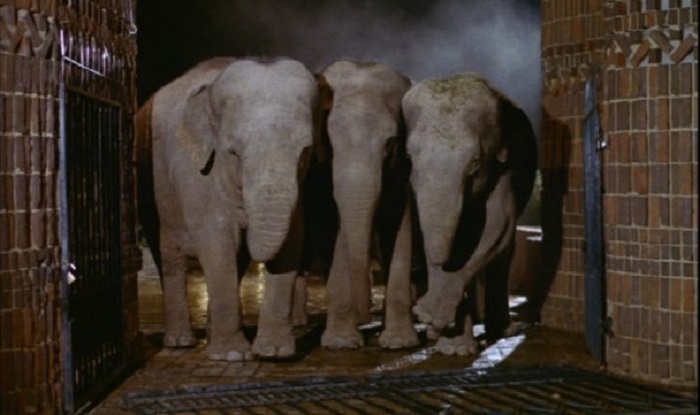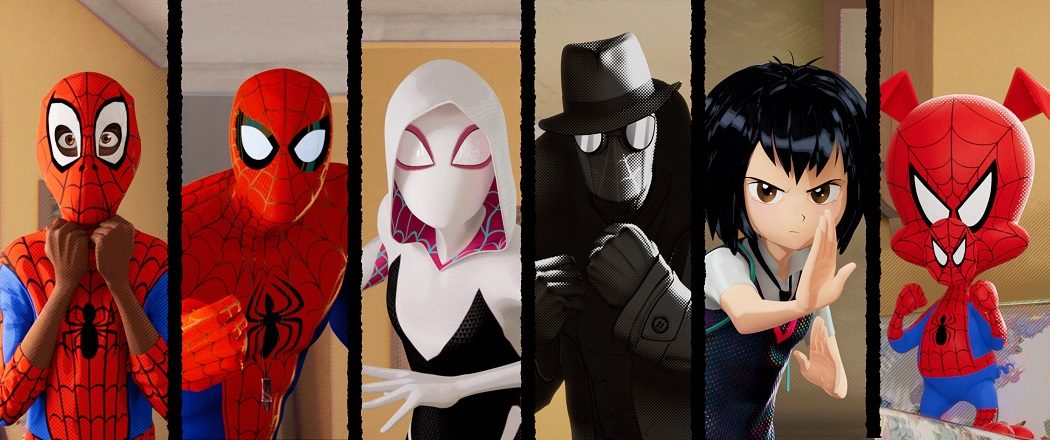
'Spider-Man: Into the Spider-Verse' Review
‘Spider-Man: Into the Spider-Verse’ reInvents your friendly neighborhood webslinger more than once.
Release Date: December 14, 2018
MPAA Rating: PG
Miles Morales becomes the Spider-Man of his reality and crosses paths with his counterparts from other dimensions to stop a threat to all reality.
Directors: Bob Persichetti, Peter Ramsey, Rodney Rothman
Screenwriters: Phil Lord, Rodney Rothman
Producers: Avi Arad, Phil Lord, Christopher Miller, Amy Pascal, Christina Steinberg
Cast: Shameik Moore (Miles Morales), Jake Johnson (Peter B. Parker), Hailee Steinfeld (Gwen Stacy), Mahershala Ali (Uncle Aaron), Brian Tyree Henry (Jefferson David), Lily Tomlin (Aunt May), Zoe Kravitz (Mary Jane), John Mulaney (Spider-Ham), Kimiko Glenn (Peni Parker), Nicolas Cage (Spider-Man Noir), Kathryn Hahn (Doc Ock), Liev Schreiber (Wilson Fisk), Chris Pine (Peter Parker)
Editor: Robert Fisher Jr.
Production Designer: Justin Thompson
Casting Director: Mary Hidalgo
Music Score: Daniel Pemberton
Production

For the past 20-ish years, the character of Spider-Man has been treated as a running joke in the Marvel cinematic universe, having gone through three different movie incarnations and still only gaining respect in Captain America: Civil War and The Avengers: Infinity War. Well, true believers, fear not; he’s now the star of one of the best animated movies of the year with Spider-Man: Into the Spider-Verse.
Spider-Man: Into the Spider-Verse is about a mild-mannered kid named Miles Morales (voiced by Dope’s Shameik Moore) who, while spray-painting a graffiti mural in an old sewer, is bitten by a radioactive spider. Sounds familiar, right? Only, in this case, Spider-Man already exists, so Miles becomes sort of a second, clumsier Spidey.
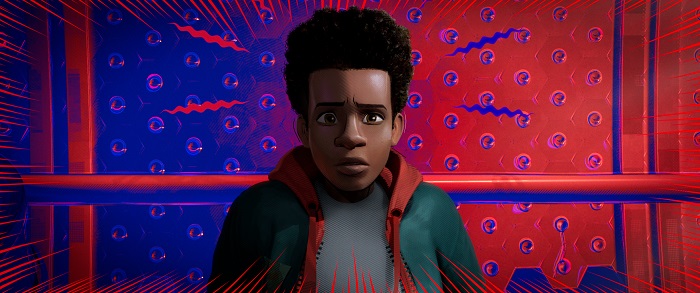
When he goes back to the sewer for some answers, he runs into the real Spider-Man (Hell or High Water’s Chris Pine), who happens to be trying to stop his arch-nemesis Kingpin (Liev Schreiber from Spotlight) from opening a portal to another dimension. Spidey is partially successful, but is killed in the process, giving Miles a USB dongle that can destroy the dimension opening machine as his last heroic act. Miles mourns the death of the Friendly Neighborhood Spider-Man, along with the rest of the world, but as he does, he runs into yet another Spider-Man (Tag’s Jake Johnson) that was pulled into Miles’ dimension from his own by the device.
And it doesn’t stop there; four more Spideys, including Spider-Gwen (Hailee Steinfeld from Bumblebee), Spider-Man Noir (Joe’s Nicolas Cage), Peni Parker (Nerve’s Kimiko Glenn) and her robot Spidey, and Peter Porker Spider-Ham (John Mulaney from “Saturday Night Live”) have all been accidentally dragged over from their respective dimensions. The Spider-Men (and women) team up to stop Kingpin from using his machine again, while hoping that they can use the machine themselves to get back to their own dimensions.
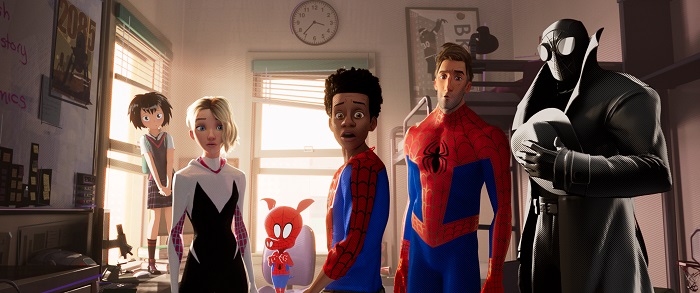
Spider-Man: Into the Spider-Verse was directed by Bob Persichetti (Puss in Boots), Peter Ramsey (Rise of the Guardians), and Rodney Rothman (22 Jump Street) from a script written by Rothman and Phil Lord (The Lego Movie), based on all of the usual Marvel Comics characters. The setup sounds complicated, but it’s really not.
It’s actually a pretty simple, point A-to-point B superhero team-up movie. And it’s perfect that way. It lets the different Spideys kick ass in each of their respective ways, blending both action and comedy into one hell of a fun movie. It’s a fresh take on a superhero that, quite frankly, benefits greatly from the re-invention.
Just as one might imagine, it’s also a very self-referential movie. The opening monologue, spoken by Spiderman himself, basically goes over his entire history, which includes his movies, T.V. shows, and merchandise (and, in his own words, his “so-so popsicle”). This Spiderman exists in the world as we know it, where he is already a real-life cultural icon. It’s all very meta, and it fits the tabloid-reporting, sensationalistic universe which with his fans associate him. He’s a star, and he knows it.
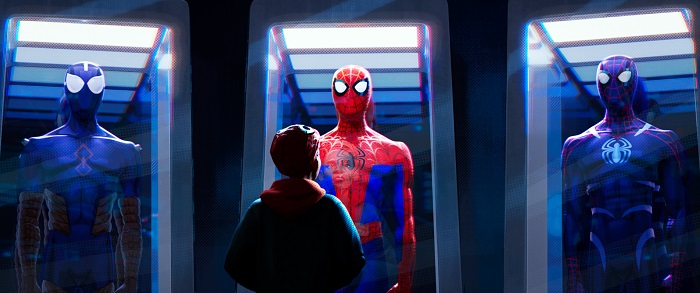
Speaking of stars, the voice cast for Spider-Man: Into the Spider-Verse is top-notch. Not only do fans get all of the A-list names who lend their voices to the different dimensional Spider-People, but the support cast is packed with recognizable voices as well, actors like Mahershala Ali (Green Book) as Miles’ uncle, Lily Tomlin (Grandma) as Aunt May, Zoë Kravitz (Mad Max: Fury Road) as Mary Jane, and Kathryn Hahn (Afternoon Delight) as Doc Ock (really). Oscar Isaac (Finding Llewyn Davis) even pops in as “Interesting Person #1,” and rapper Post Malone shows up as “Brooklyn Bystander.” And, of course, the late Stan Lee makes his usual – and final – Marvel cameo.
There’s a heartwarming theme to Spider-Man: Into the Spider-Verse that shines through all of the superhero combat and wisecracking humor. Miles’ accidental superpowers, the reveal of the other-dimension Spider-Men, and the imagery of the millions of Spider-Fans wearing their Spider-Man costumes while in mourning all scream out that anyone can wear the mask and tights, and that everyone should be their own hero.
And, just in case someone in the back missed it, the film spells it out – “we are all Spider-Man.” It’s quite a message, and one that puts a meaningful exclamation point on an already fun movie.
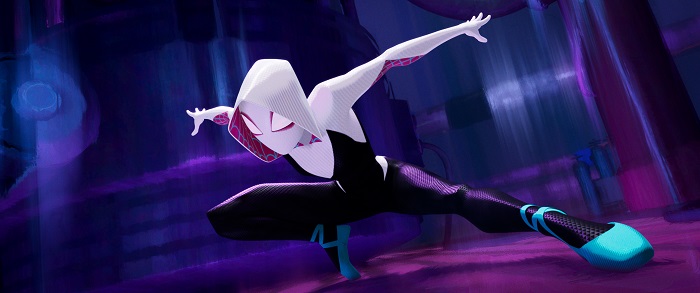
Animation

The animation style in Spider-Man: Into the Spider-Verse is remarkable. The movie is presented in almost a comic book-style fashion, with flat 2D imagery that is more detailed than newsprint panels, but not by much. It’s economical artwork that lends itself well to the superhero theme of the film.
It’s also extremely versatile, allowing for the pulp serial Spider-Man Noir, the anime-style Peni Parker, and the Looney Tunes-esque Peter Porker to all coexist seamlessly within the same frame. With all of the different characters, it’s almost like watching the Sunday comics section come to life right before your eyes. And that’s a refreshing change from the overly-slick Disney-Pixar animated movies to which audiences have grown accustomed.

